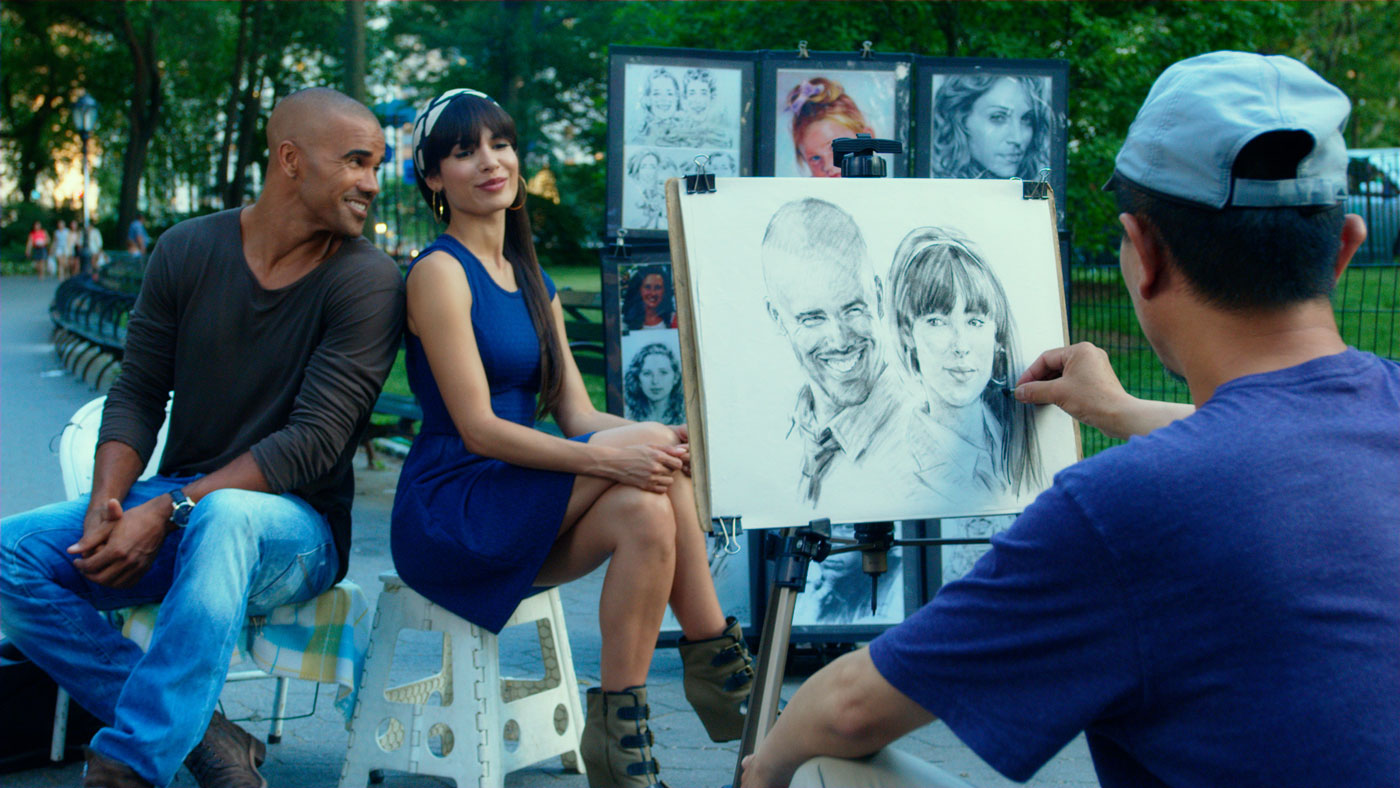Ben Kufrin. By Pauline Rogers.
When cinematographer Ben Kufrin and director Youssef Delara came together for their fifth feature pairing, the romantic comedy The Bounce Back, driven by actor Shemar Moore (Criminal Minds), it was their largest-scale project to date. Given the budget and the number of locations throughout Los Angeles (including a day in New York at the end), there was no question this “little movie” would need highly trained and talented people behind the camera. “That meant IATSE members we trusted,” Kufrin recounts.
The crew had negotiated their rates prior to beginning production, knowing there was the absolute intention to “flip” once shooting began. “The contract showed that even a movie with a smaller budget could still provide a union contract to benefit its members and also keep the work in L.A.,” Kufrin continues. “It’s a win for everyone and a testament to the producers who supported it.” Under an IA contract, Kufrin and Delara were confident their tough 30-day shoot (with multiple locations per day), part of their first real foray into the romantic-comedy genre, could be done and done well.
The two chose a look and feel in the style of classic Hollywood romantic comedies. “There’s a language to the genre that audiences expect, and we wanted to communicate in that sensibility,” Kufrin describes. That meant the ARRI Alexa Plus camera, shooting ArriRaw in 1:85 with two lenses – Primo 11-1 zoom and primo wide zoom 15-40, all from Panavision – would move seamlessly without drawing attention.
“We chose spaces within which the characters would photograph well and that would have strong depth and visual appeal, yet still serve the story,” Kufrin continues. “We tried opening up the scenery so it didn’t feel like we were cheating the audience from seeing where we were, which I think many indie films make the mistake of doing.”
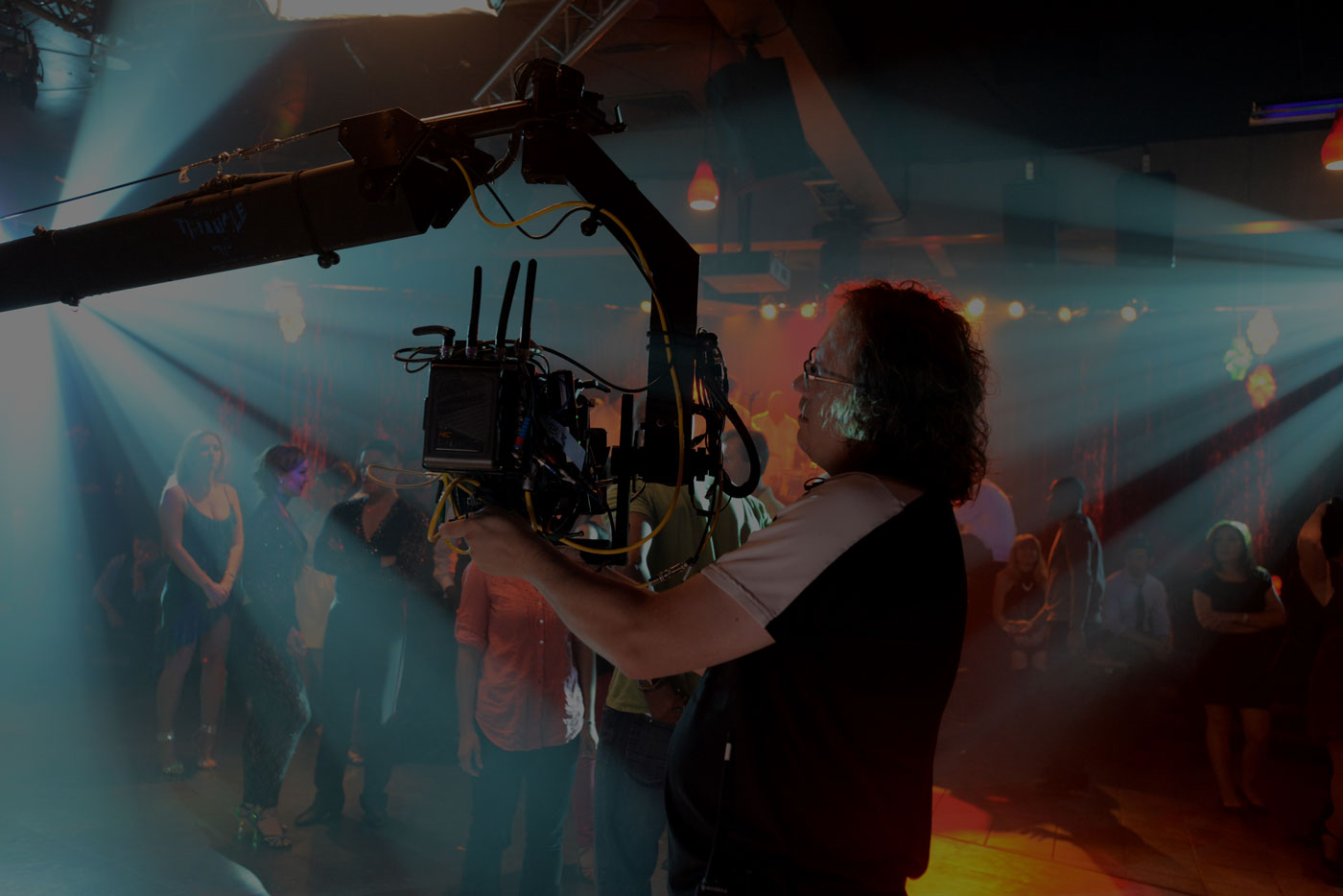
At the beginning, the color palette would feel natural and pleasing to the eye, but not overly romanticized. As the characters developed and began to reveal themselves, the look would shift toward warmer, softer and more nuanced tones. Working with production designer Mark Tanner, Kufrin and Delara previsualized scenes with photo boards created at the locations, using as much of the space as possible.
“That meant moving a lot with the Steadicam, dolly, and jib – but always fluidly and gracefully,” Kufrin adds. “A-Camera Ric Griffith, who has many years of experience as a dolly grip, has a keen sense of movement. Ric’s Steadicam was integral to the plan, as the camera would float or glide consistently but always with motivation.”
Getting the best out of each location – and keeping to a tight schedule – was a challenge. “But, thanks to our locations team, the locations were often in relative proximity to one another,” Kufrin recalls. Many sequences were shot at the Simi Valley Mall, and the large exterior promenade offered different looks for both interiors and exteriors, while still being close to other locations outside the mall.
They leapfrogged a lot – starting with grip-heavy day exteriors to get going quickly and then moving into interiors. Kufrin sent a small pre-rig crew ahead to the interiors each day to be ready when the company moved inside. Gaffer Sean Tanner and his electrical team strategically cabled the mall before Day One of principal photography, allowing Best Boy Bob Shoemaker to then efficiently route power and generator placement per each day’s requirements. “Key Grip Ernesto Pérez brought in Matthews’ Max and Mini Max rig support, which also saved us time,” Kufrin adds. “We could get lights and rigging up and out quickly and effectively, making the setups go fast.”
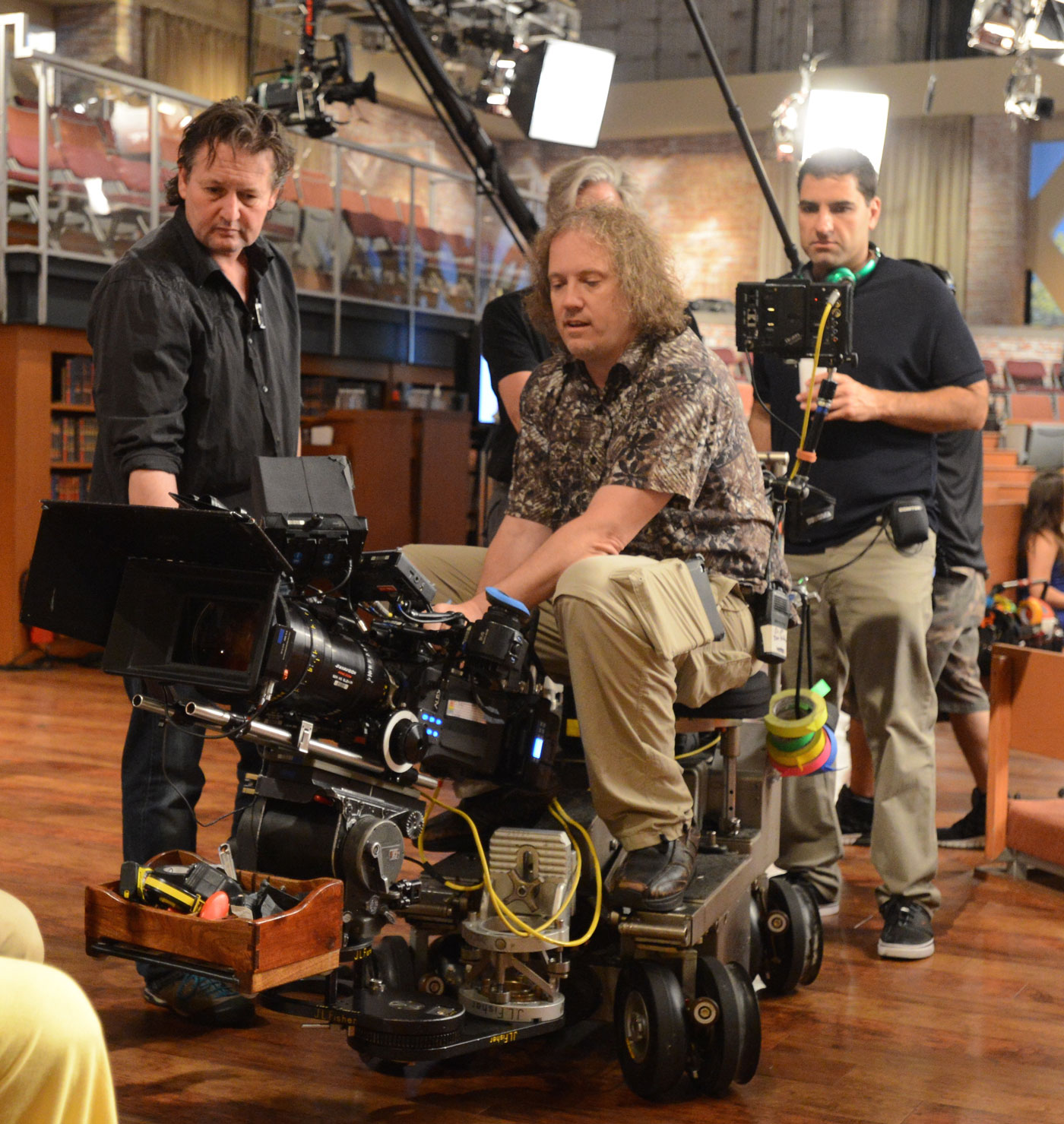
Lighting with a large Hollywood feel was paramount to the look. “Sean brought in a couple of Octaplus Chimeras from Cinelease that wrapped beautifully and gave us consistent and creamy key light sources that emulated one of my favorites, the book light, but easier to control and with a smaller profile and footprint,” Kufrin explains.
When we’re first introduced to Matthew (Moore) and Kristen (Nadine Velasquez –Flight and My Name Is Earl), they are presented separately and in tandem timelines. “They both share the pain of unresolved past breakups and have moved on, though they are emotionally compromised,” Kufrin reveals. The color palette for this early part of the film had both leads practically blending in with their backgrounds.
“When Shemar’s character conducts his self-help seminar early in the film, he appears to be well-adjusted on the outside but still somewhat uneasy, to where even the suit he wears almost blends him in with the curtain on stage,” Kufrin recounts. “Nadine’s character is a young therapist who is having trouble holding on to her patients, and she too struggles to separate from the background of her own life.”
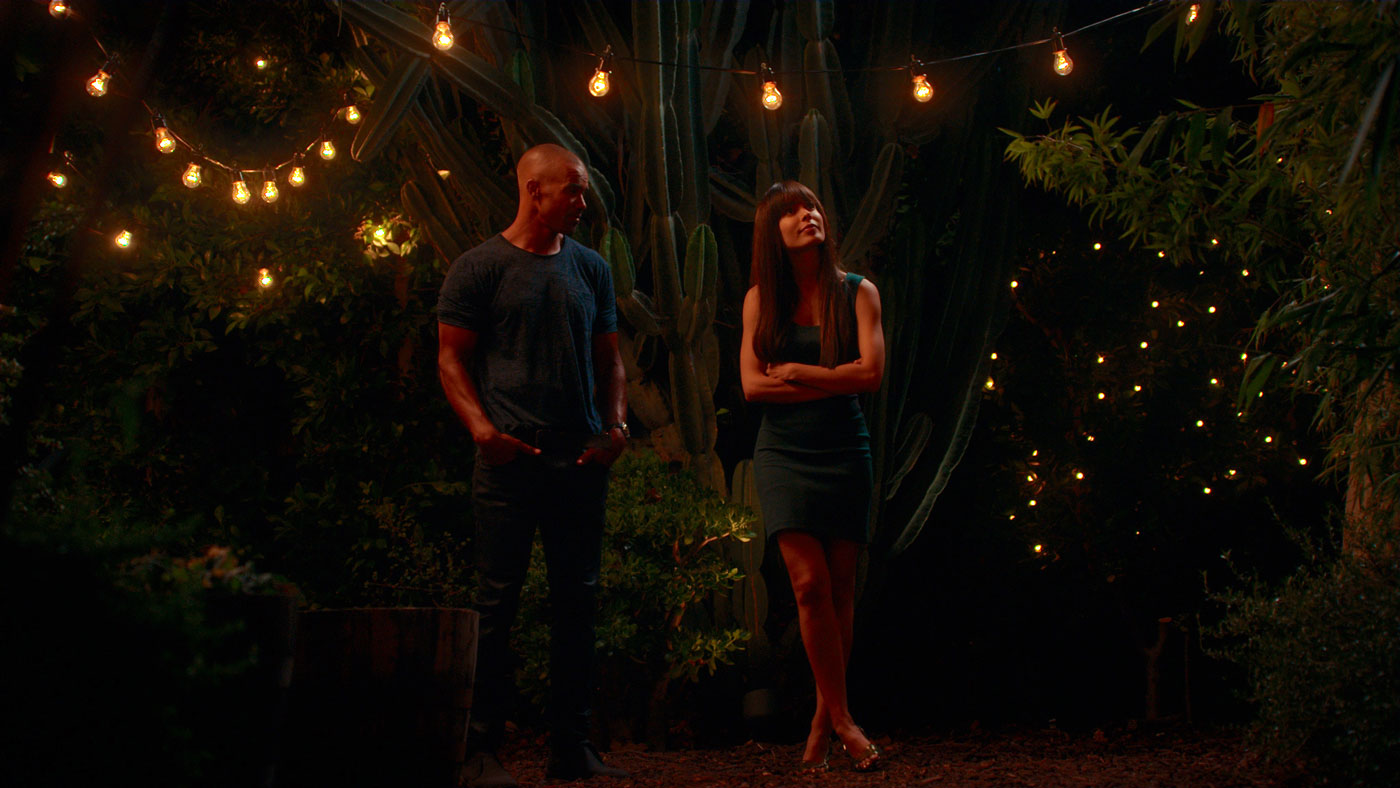
Sparks fly when Matthew is publicly confronted by Kristen at his seminar, where she calls his quick-fix solutions for “bouncing back” from a broken heart “a sham.” By trying to discredit his methodology, Kristen is soon engaged by television producers on her own press junkets to counter with opposing views.
Kufrin says that from that point, “we tried to let the comedy play in two and three shots, wider initially when it came to Kristen and her match-making, bar-hopping, girlfriends and also with Shemar’s character and his hilariously hyperactive, live-wired manager friend Terry [Bill Bellamy].”
As the characters emerge from the background, they move past heartache and into self-discovery. “We showed this shift by moving into more colorful and vibrant palettes, warmer lighting and sharper accents,” Kufrin adds. “Trying not to over-glamorize, I kept a soft, natural lighting style that didn’t feel affected but still had a little sparkle and luster to it, and only occasionally adding a light Classic Soft filter on the lens.”
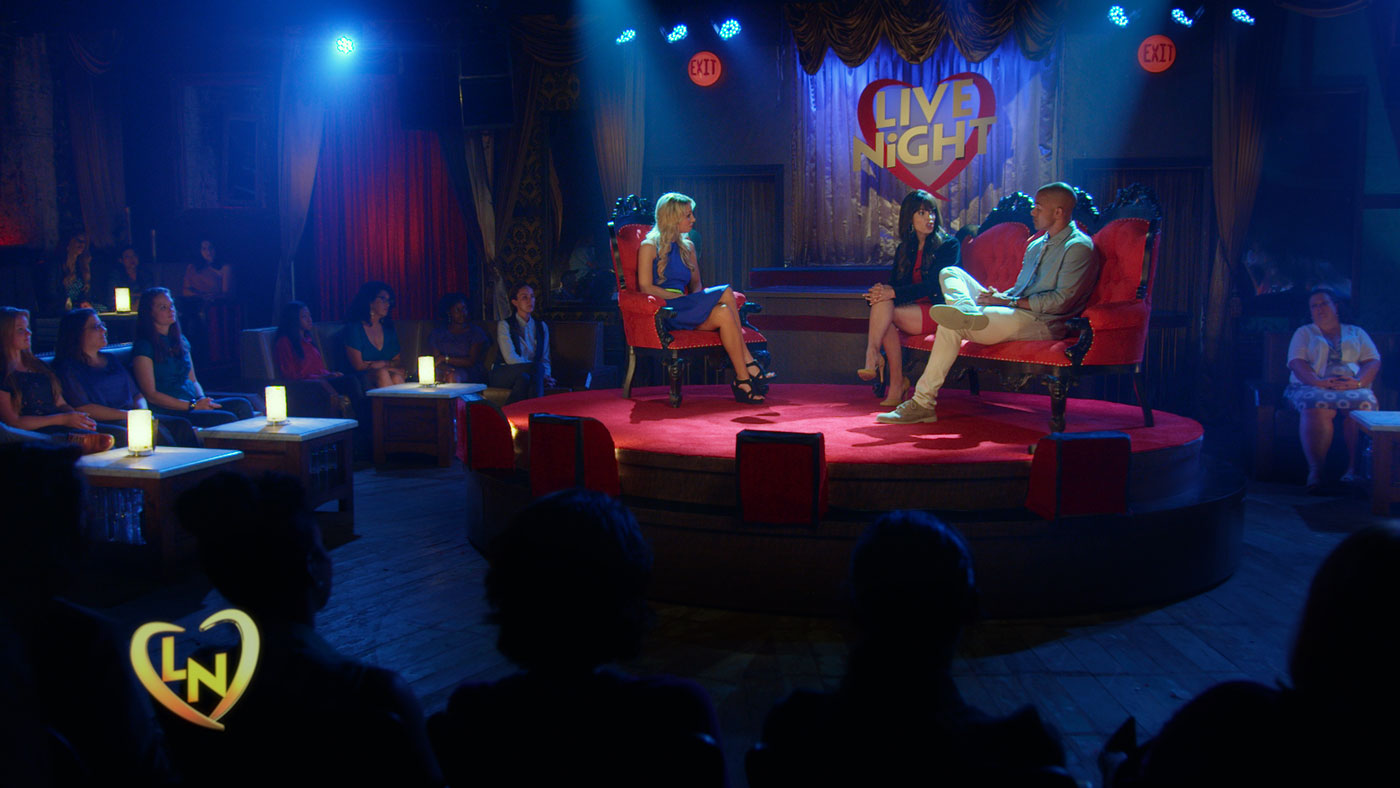
The movie’s tone is set in the opening shot, beginning on a three-by-three-inch darkened video viewfinder from a pedestal-style TV camera. “At this moment the audience is not quite sure where they are until the screen jumps to life, revealing a low-resolution black and white video image of what looks like the set for a television talk show,” Kufrin reveals. “The camera then pulls back, holding focus on the viewfinder screen for a moment, then racks to the camera itself, pulling back still wider to see stagehands working on the set, followed by a cameraman who emerges, puts on his headset, and takes his place behind the TV camera. The shot is now at full height near the ceiling – a bird’s-eye view of the TV crew ready to go live.”
Kufrin says the shot acts as a statement on the notion of “perception is truth” set forth by today’s media practices. “We see the world through the electronic prism of infotainment and how it’s spun to sell us a point of view,” he continues. “It’s how Matthew Taylor spins his views as a relationship expert on coping with and moving on from the past as if it never existed, even though he quietly hints at doubting his own self-created philosophy. The shot was accomplished relatively low tech but still smoothly and precisely, using a Matthews arm on a track with a Lambda head, pulling back and jibbing up at the steady guide of our dolly grip Mark Pickens.”
In scenes where characters emote vulnerability, as in a romantic sequence where Matthew and Kristen take a nighttime stroll through an enchanting string-light park, the team chose to build to the close-ups slowly and sparingly. The shot begins with a wide crane up to reveal the nighttime garden setting and the characters passing through. When they start to open up to each other, the camera gets closer through a series of soft cuts and blocking until the shot is finally closer than the camera has been on each of them. The glow of the string and tiny twinkle lights designed into the scene heightened the romantic tone more so than any other scene in the movie that, along with a light Classic Soft diffusion, appropriately conveyed the vibe.
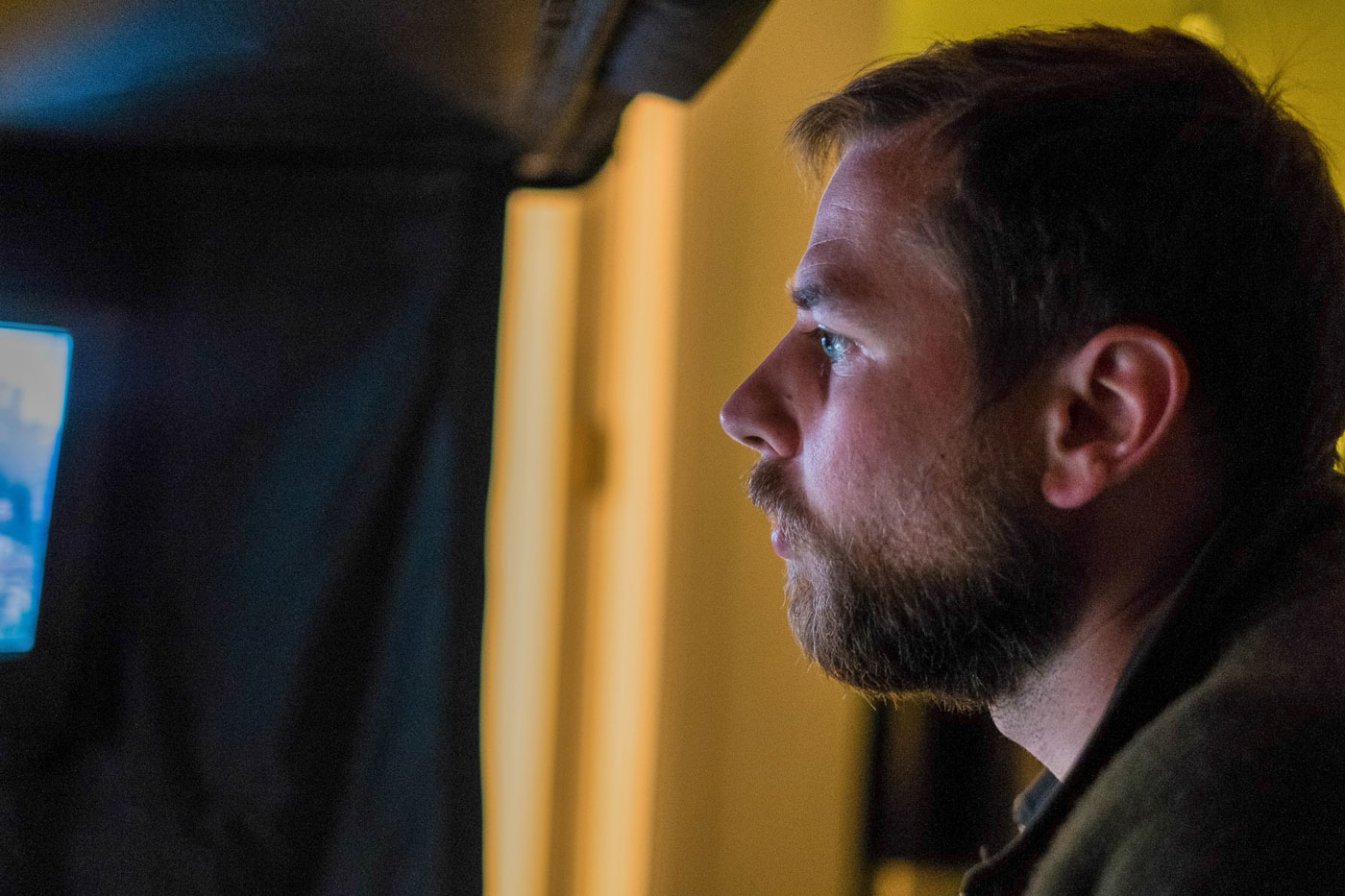
“Showing restraint with close-ups takes some discipline, especially with such an attractive cast,” Kufrin states. “The tendency is to want to get in on their faces a lot. However, by being judicious with close-ups, you give the audience something to look forward to and give the characters something to build to as well.”
One of the most challenging scenes was when Matthew and Kristen first confront their opposing viewpoints on the Live Night talk-show set. It was a massive day on location at DBA, a club in West Hollywood. “The art department didn’t even have a full prep day, and grip and electric only had an extra hour advance call on the day to load in and start lighting a huge nighttime talk-show set with nearly 100 extras as live audience members,” Kufrin recalls. “We had two cameras, one on a jib with a remote head and one on a dolly – tricky lighting cues and only a day to get in and out for nearly seven pages!”
The scene was structured by mixing a typical talk-show template but also incorporating emotional beats of the story inside the talk-show format. “We tried to make it look like you were there participating as well as watching it on TV,” he explains.
“We used the Jimmy Jib [with the 15-40 primo] for B-camera, constantly moving and swooping in and across the action, which gave the show a sexy, fluid moving quality for coverage, along with our A-camera moving on a dolly [with the 11-1 zoom],” Kufrin adds. “Later we moved in for even closer shots and static pieces, narrowing our scope little by little so we would be practically shooting inserts by the time we wrapped.”
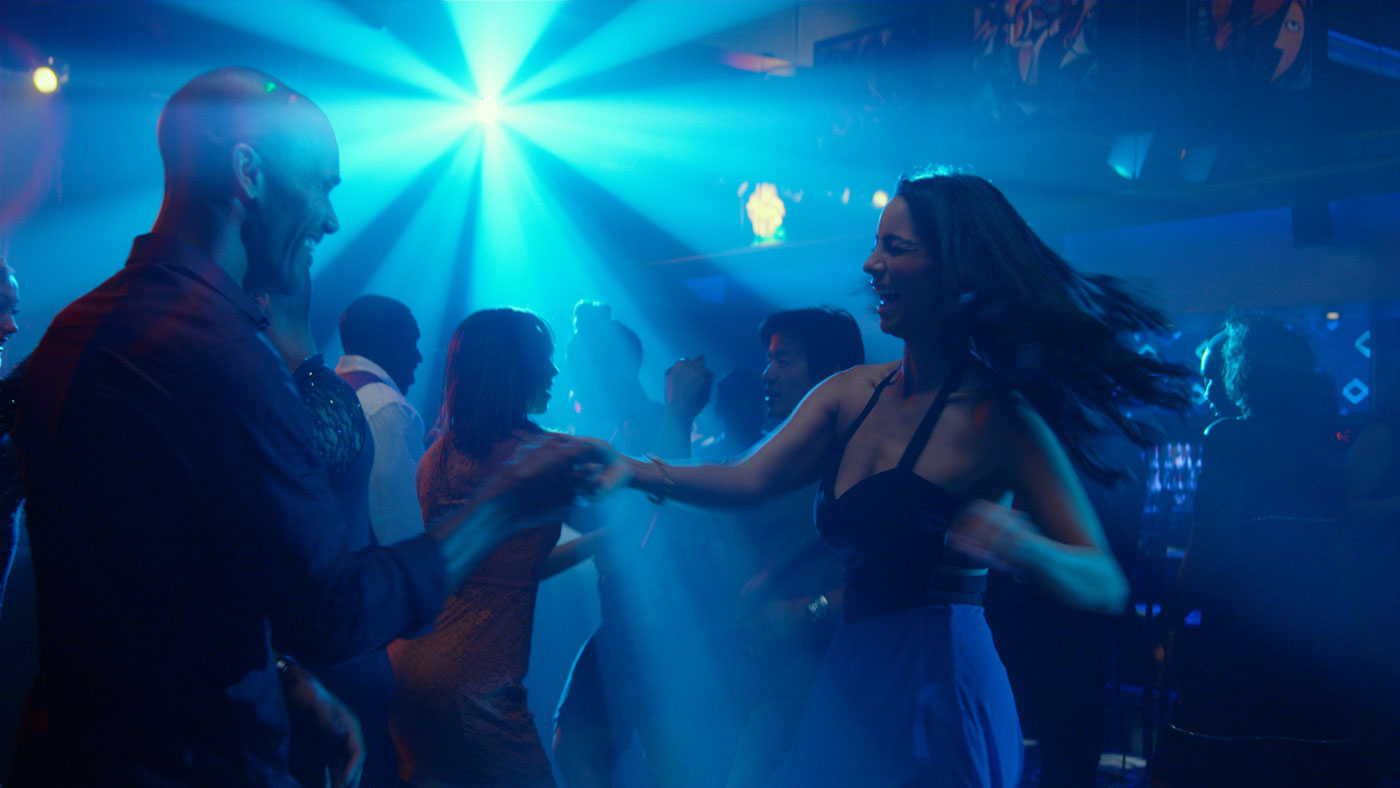
Lighting for the club audience was kept moody with a mixture of warm frosted practical lamps at tables. Sean Tanner affixed some of the table-lamp fixtures with 25-watt and 60-watt open-face bulbs, all on dimmers. He also put up several colored gel tubes and strung them randomly along a dark brick wall to help make the dark pockets of the club have more depth and pop. Tanner then used a Leko to special the main Live Night sign that the art department hung prominently upstage and behind the stage.
Kufrin says his favorite shot in the film takes place at a Latin dance club, where Matthew takes a woman he just met dancing. The transition into this brief scene started super close on a Cuban trumpet player on the stage bathed in an apricot amber stage light with yellow PAR cans for backlights. It started on a 15-mm lens just inches away from the end of the horn that fills the frame, and then pulls back and swoops down wide through a crowded dance floor. Flares were incorporated from intelligent cyber lights moving and flashing to the beat of the music, until the camera is at the far end of the club, and Matthew and his date twirl into the frame with a sexy finesse.
The shot lasts about eight seconds, with the camera dynamics setting the tone for a humorous aftermath that follows. “Because we had a limited budget, I resorted to an older 25-foot Jimmy Jib on a triangle with a remote head – something I used in my old music-video days,” Kufrin explains. “It is a great tool for making swift, extreme movements. It came from my longtime Jimmy Jib operator Joe Copolla and his guys and was essential to the club and the Live Night talk-show sequences.”
Kufrin says executing some ambitious moves was in no small part due to his longtime relationship with vendors such as Cinelease, Matthews, Panavision and Fisher Dolly; top-notch gear in the hands of a talented union crew was the recipe for success.
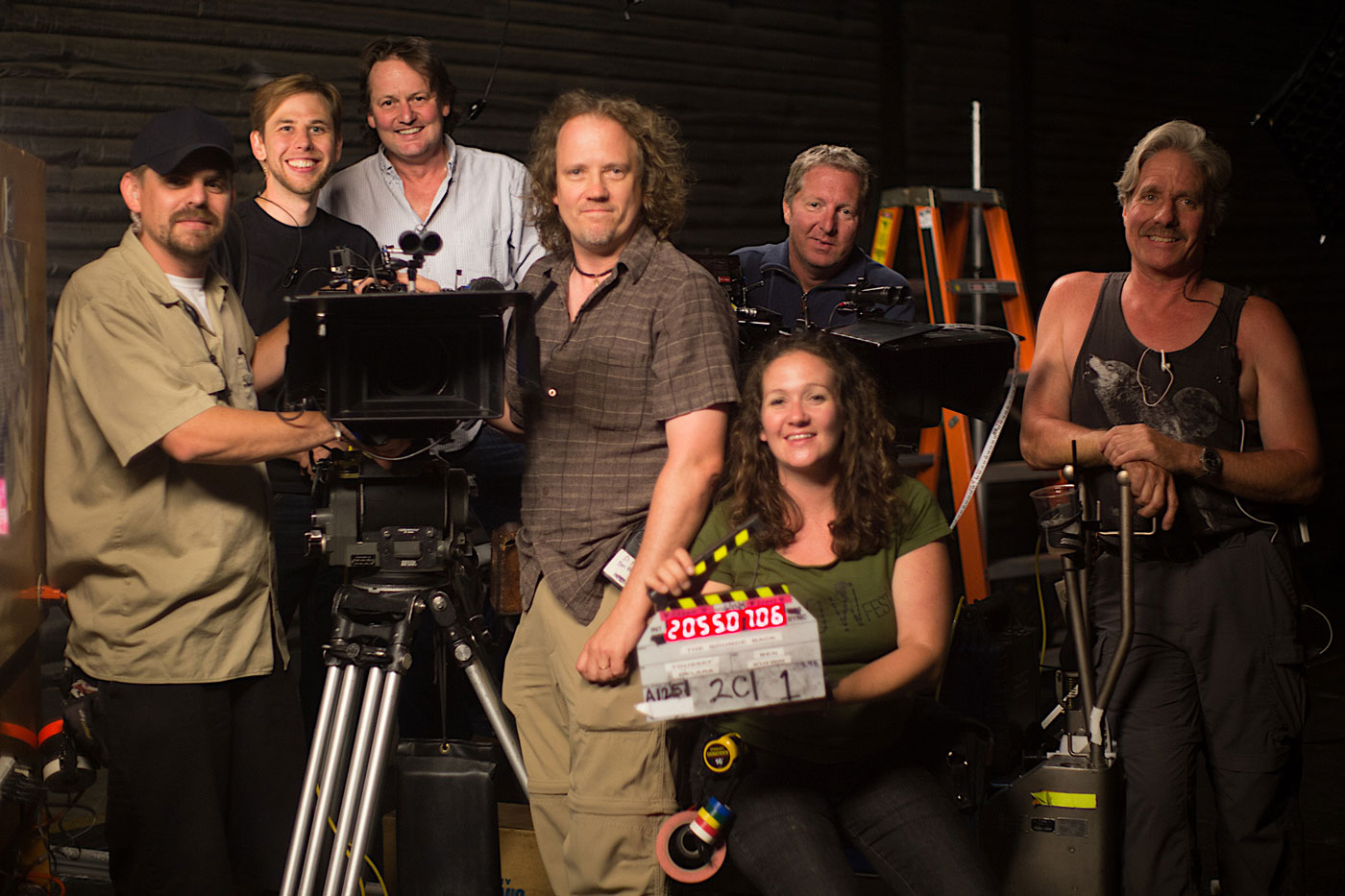
And that recipe also included having a D.I.T. (Kyle Peters) on set. “It’s important because you need the workflow to be organized, streamlined and consistent,” Kufrin says adamantly. “Having a good D.I.T., you can leave at wrap with peace of mind knowing the work is accurately representative of where the intention is by the time we get to the DI. The D.I.T. is the bridge between the DP’s work and postproduction.”
“The D.I.T. is critical for any budget level because he or she can bring much more value to production,” Peters adds. “By having one on set, critically tracking camera metadata, monitoring exposure, and managing source data, postproduction was able to begin cutting right away with great-looking dailies.”
One prime example was the talk-show segments – Peters used a piece of software called PixelConduit to pull a live key off the green screen and overlay a background into the scene in real time. “Everyone on set was able to view a rough composite of the green screen, which helped Lighting and Art get the scene dialed in,” he explains.
“With this tight budget, ambitious schedule, and desire to make The Bounce Back as rich a Hollywood romantic comedy as possible – having a full talented and committed union crew was the only way to go,” Kufrin concludes.

